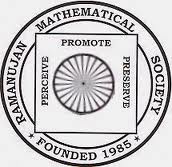Journal of the Ramanujan Mathematical Society
Volume 40, Issue 1, March 2025 pp. 5–22.
p-Numerical semigroups of Pell triples
Authors:
Takao Komatsu and Jiaxin Mu
Author institution:Institute of Mathematics, Henan Academy of Sciences, Zhengzhou 450046 China.
Summary:
For a nonnegative integer p, the p-numerical semigroup S{p} is
defined as the set of integers whose nonnegative integral linear
combinations of given positive integers a{1}, a{2}, ⋯ , a{κ}
with gcd(a{1}, a{2}, ⋯, a{κ})=1 are expressed in more than p
ways. When p = 0, S = S{0} is the original numerical semigroup. The
laregest element and the cardinality of ℕ{0} \ S{p}
are called the p-Frobenius number and the p-genus, respectively.
Their explicit formulas are known for {κ} = 2, but those for
{κ} ≥ 3 have been found only in some special cases. For some
known cases, such as the Fibonacci and the Jacobstal triplets,
similar techniques could be applied and explicit formulas such as
the p-Frobenius number could be found.
In this paper, we give explicit formulas for the p-Frobenius
number and the p-genus of Pell numerical semigroups
(P{i}(u),P{i+2}(u),P{i+k}(u)). Here, for a given positive
integer~u, Pell-type numbers P{n}(u) satisfy the recurrence
relation P{n} (u) = u P{n-1}(u) + P{n-2}(u) (n ≥ 2) with
P{0}(u)=0 and P{1}(u)=1. The p-Ap\'ery set is used to find
the formulas, but it shows a different pattern from those in
the known results, and some case by case discussions are necessary.
Contents
Full-Text PDF
